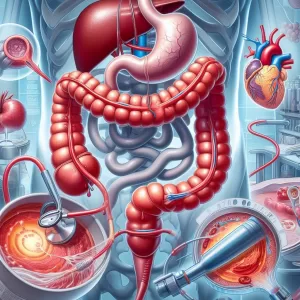What is Multiple Myeloma?
Multiple myeloma is cancer that affects the bone marrow.
The bone marrow is where blood cells are made and mature. Myeloma is caused by a white blood cell called a plasma cell, which normally works to produce proteins that fight infections (antibodies). When a plasma cell cancer occurs, the plasma cells not only grow out of control in the bone marrow but also impair the ability of the bone marrow to make other healthy blood cells. Multiple myeloma is so named because the cancer is often found in several different bones. Symptoms of multiple myeloma may be the result of decreased normal blood cells, such as paleness, shortness of breath, feeling more tired than usual and bleeding gums, or the result of the quick growth of the cancer cells, such as unexpected weight loss, bone pain or fragile bones. There is currently no cure for multiple myeloma, but there are treatment options that help to control the disease. Myeloma is usually slow-growing cancer, and for this reason, the outlook depends on factors such as the age of the person diagnosed, the aggressiveness of cancer, and the development of complications.
Risks
Multiple myeloma is a cancer that affects cells which are growing in the bone marrow. Bone marrow is the spongy tissue inside bones where all blood cells grow and mature. Plasma cells are a type of white blood cell that helps the body fight infections by producing proteins called antibodies. Myeloma is cancer that arises from abnormal plasma cells, causing them to multiply quickly. This overgrowth of plasma cells crowds the growth of healthy blood cells, which affects the body’s ability to transport oxygen, clot when bleeding, and fight infections. These plasma cells also produce extra proteins, which can damage the kidneys. The cause of multiple myeloma is unknown. However, the risk of developing multiple myeloma increases with age. It rarely affects people under 40 years and is mostly diagnosed by the age of 70. Men are more likely than women to develop this condition.
Symptoms
Common symptoms include paleness, shortness of breath, feeling tired and bleeding gums. Other symptoms may include weight loss, bone pain, and fragile bones. Some people may suffer blood clots, recurrent infections, or kidney problems. There may be no symptoms in the early stages of this condition because symptoms develop as the disease progresses.
Diagnosis
The diagnosis may be suspected based on the symptoms and physical examination, but can only be confirmed with further testing. Blood tests can show if there is a problem with blood cell production, and urine tests may show extra protein as a result of the increased activity of the plasma cells. A PET scan (a special type of CT scan) may be done to look for other sites of multiple myeloma around the body. A small sample of the bone marrow (biopsy) is taken with a needle and is checked for cancer cells.
Treatment
There is currently no cure for multiple myeloma, but there are treatment options that help to control the disease. Treatment may involve a combination of chemotherapy, radiotherapy, and stem cell transplantation. The exact combination of therapies depends on the stage of the disease, the general health of the affected person, and whether any complications have occurred. The treating doctor can give the best advice for treatment in individual cases. Complications such as bone pain, fracture, anemia, and kidney damage may require specific treatment.
**What is Multiple Myeloma?**
Multiple myeloma, a type of blood cancer, is characterized by excessive production of abnormal plasma cells in the bone marrow. These abnormal plasma cells, known as myeloma cells, interfere with normal bone marrow function and can lead to serious health issues.
**Causes and Risk Factors**
The exact cause of multiple myeloma is unknown, but certain risk factors are associated with its development:
* Age (most commonly diagnosed in people over 65)
* Race (more common in African Americans)
* Obesity
* Family history of multiple myeloma
* Exposure to certain chemicals (e.g., benzene)
**Signs and Symptoms**
Multiple myeloma can manifest with varying symptoms, depending on the severity and location of the myeloma cells:
* Bone pain (in the back, hips, ribs, or skull)
* Fatigue
* Weakness
* Anemia
* Frequent infections
* Kidney problems
* Weight loss
* Neurological issues
**Diagnosis**
Diagnosing multiple myeloma involves a combination of tests, including:
* Blood tests (CBC, immunoglobulins)
* Urine tests (proteinuria)
* Imaging tests (X-rays, MRI, PET scans)
* Bone marrow biopsy
**Treatment**
Treatment for multiple myeloma typically includes a combination of therapies aimed at controlling myeloma cell growth and improving quality of life:
* Chemotherapy
* Radiation therapy
* Targeted therapy (e.g., proteasome inhibitors, immunomodulatory drugs)
* Supportive care (e.g., pain management, blood transfusions)
* Autologous stem cell transplant
**Prognosis and Outlook**
The prognosis and outlook of multiple myeloma vary depending on factors such as the stage of the disease, overall health, and response to treatment. With advances in treatment options, survival times have improved significantly in recent years. It is important to follow regular medical checkups and follow the prescribed treatment plan to ensure the best possible outcomes.
**Additional Keywords:**
* Blood cancer
* Malignant myeloma
* Plasmacytoma
* Monoclonal gammopathy
* Bone marrow cancer
* Plasma cell disorder
* Cancer of the bone marrow
2 Comments
Leave a Reply
Popular Articles








This is cancer of the plasma cells by a type of white blood cell made in the bone marrow.
Multiple myeloma is a cancer of the plasma cells, a type of white blood cell made in the bone marrow.